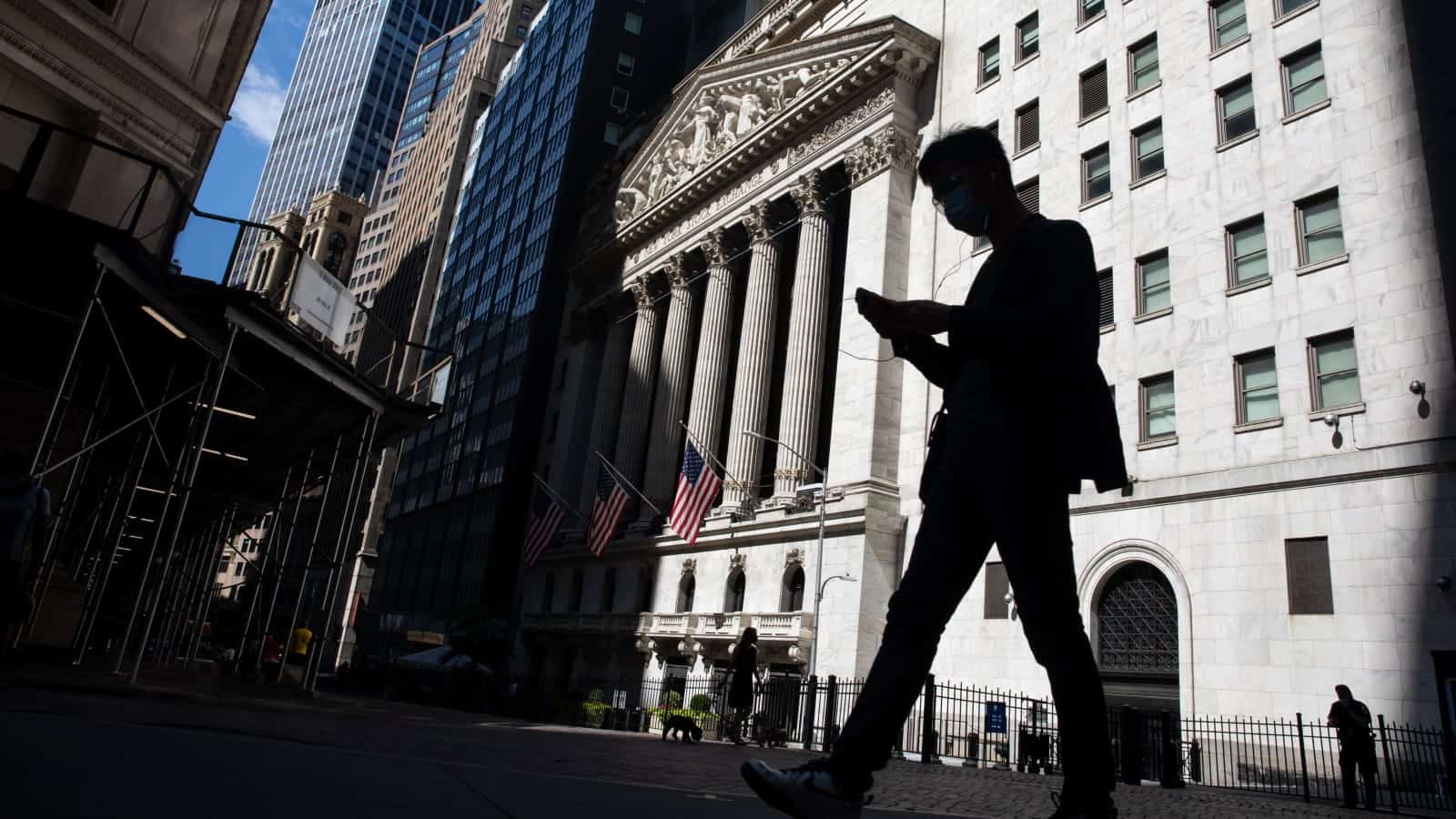In a summer of unending news, we may be heading into what could be the newsiest week of all.
The Nasdaq’s sputtering rally could be put to its biggest test yet, as tech bellwether Apple and other stalwarts of the tech rally report earnings. Early in the week, Republicans will unveil their stimulus package proposal, which will then be debated as Friday’s deadline nears for the expiration of enhanced unemployment benefits.
The Federal Reserve also meets on and is likely to discuss other steps it can take. It’s not likely, however, to make any moves as it wraps up on Wednesday, other than to assure markets it will continue to use extraordinary programs to help the economy.
Then on Thursday, the government will release a big number many investors have been dreading — the first official reading of second quarter gross domestic product, which which should show how hard the economy crashed when it was abruptly shut down.
Economists expect a contraction of about 35% in the second quarter, followed by a bounce back in the third quarter. But the size of that comeback could be directly impacted by how much stimulus Congress gives the economy, and how much the coronavirus continues to impact businesses and economic activity.
“I think there’s a clear understanding of how much the economy has leaned on the crutch of government stimulus, both fiscally and monetarily,” said Peter Boockvar, chief investment strategist at Bleakley Advisory Group. “Everyone will be watching for what will replace the $600 a week, and that will be the most important component of whatever plan they come up with.”
The $600 weekly payment to about 30 million unemployed Americans expires Friday, and it is unlikely Congress will have a plan before that date. Strategists expect the amount to be cut in half, and Boockvar said the amount of that payment will directly impact the size of the boost to the economy
The stimulus and tech earnings could both be catalysts for stocks in the week ahead.
“What the package looks like will be a huge deal, particularly on the unemployment benefits side, and whether tech companies can exceed the bar,” said Boockvar. “That’s very hard for them right now. So if they miss, does that mean it’s going to be a negative for tech and not the whole market? Are we going to keep rotating to value from growth because tech has been so dominant it could take everything down?”
Earnings for the S&P 500 companies are expected to decline by 40.3% for the second quarter, based on the results of companies that have already reported and estimates, according to Refinifiv’s I/B/E/S. Technology earnings are expected to have one of the smallest profit declines, at just 4.4% on average.
The Nasdaq, which had rallied to record highs this summer, ended lower for a second week, while the Dow and S&P 500 were higher. The Nasdaq was down 0.9% at 10,363, but it is still up 15.5% for the year so far. The S&P 500 finished the week at 3215 , after a decline of 0.3%, its first negative week in four. The S&P is down a half percent year-to-date.
“The earnings numbers overall, they’ve been pretty good. It’s just the basic problem with the stock market right now is that valuations are still pretty high,” said Ed Keon, chief investment strategist at QMA. “Other parts of the market that maybe look cheap on a price-to-book basis, their earnings have been hit. In the case of certain retailers, airlines, you have to worry about when their business is going to come back, if ever.”
About 80% of the companies already reporting have beaten Wall Street estimates. That is well above the average beat rate of about 65%, since 1994.
Dozens of major companies report in the coming week, including Facebook on Wednesday and Alphabet and Amazon on Thursday. Pharmaceuticals Merck, Pfizer and Eli Lilly are expected to report, and consumer products names Starbucks, McDonald’s and Procter & Gamble also release results. Big oil, Exxon Mobil and Chevron report Friday.
Stimulus from Congress and the Fed
Strategists expect Congress to ultimately adopt a new stimulus package of between $1 trillion and $2 trillion, but after the GOP plan is introduced it will have to be squared with Democrats’ proposals. The House has its own $3 trillion spending plan. It is unlikely an agreement can be approved before unemployment benefits expire Friday.
“Bipartisan negotiations between the White House, House, and Senate are officially underway, but we expect brinkmanship before passage. Trump administration officials also diverge on their expectations on timing, which remains optimistically by the end of July, and possibly stretching into August under the more ‘realistic’ case,” writes Ed Mills, Washington policy strategist at Raymond James.”
Mills expects the $600 weekly payment to be cut to $300 or $400, and he said it’s possible there would be more funds given to a Payroll Protection Program, to help small businesses.
“Overall, momentum is building for the next package and the final price tag is arguably moving up (closer to $1.5 -2 trillion),” Mills noted. Congress has already allocated $2.4 trillion in prior spending.
The Fed will be discussing its own stimulus, and some economists expect it could again be talking about new tactics to keep interest rates low. One idea is a policy of forward guidance, where the Fed would steer market expectations more explicitly. Another is the Fed would use targeted Treasury purchases to control specific interest rates. But no new programs are expected to be announced.
“They pretty much told us, they’re all in. They told us they’re willing to do whatever else it takes,” said Keon. “The Fed is not going to be our problem. The Fed just told us they’re going to do anything they can do to soften the blow from the virus.”

